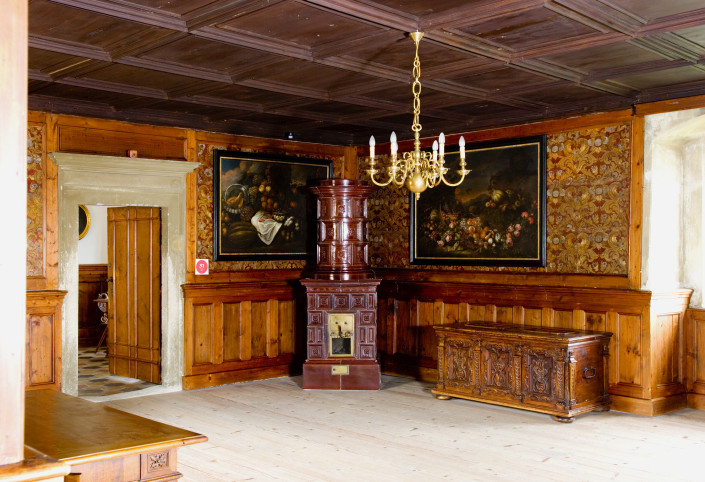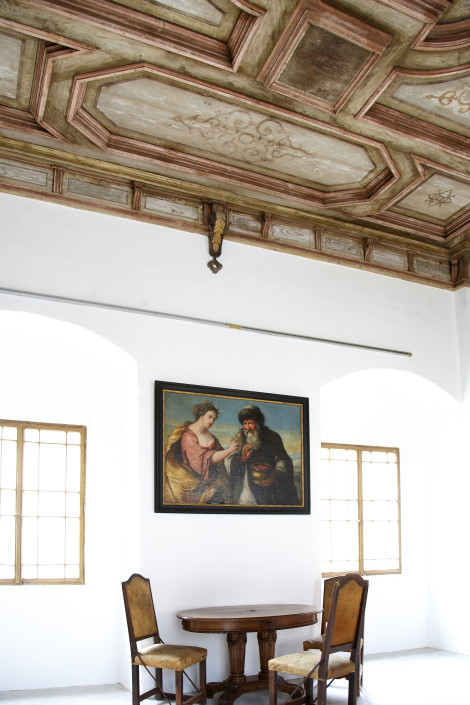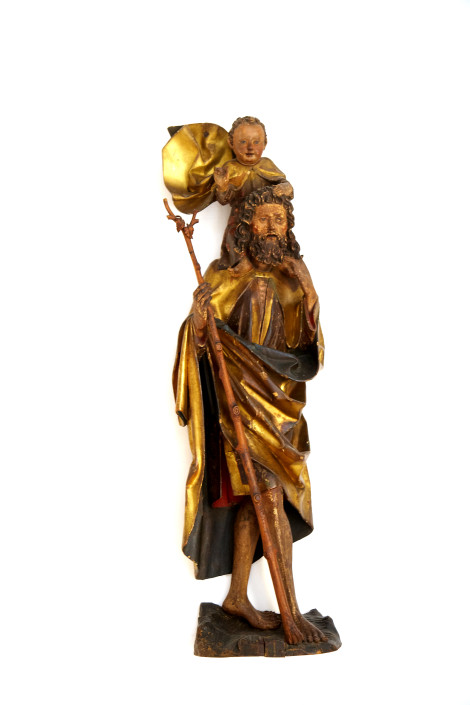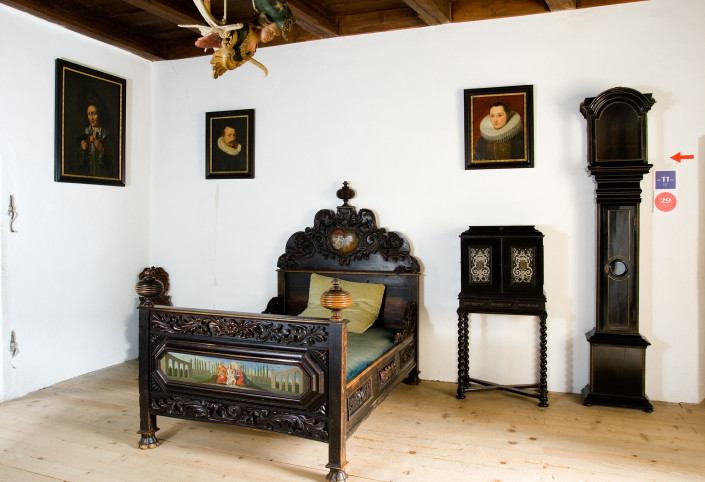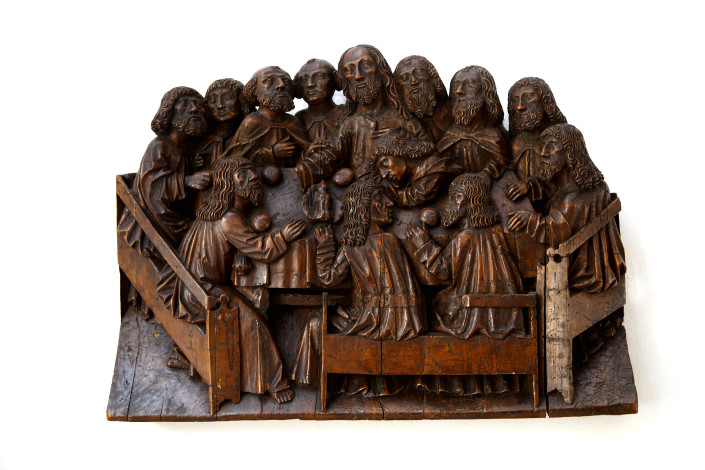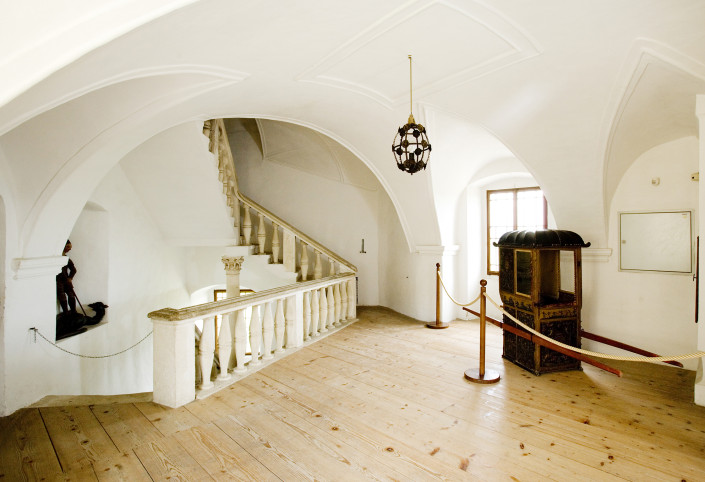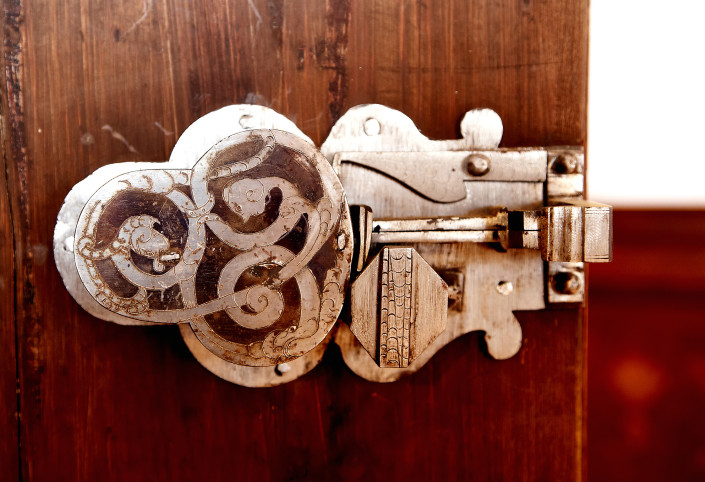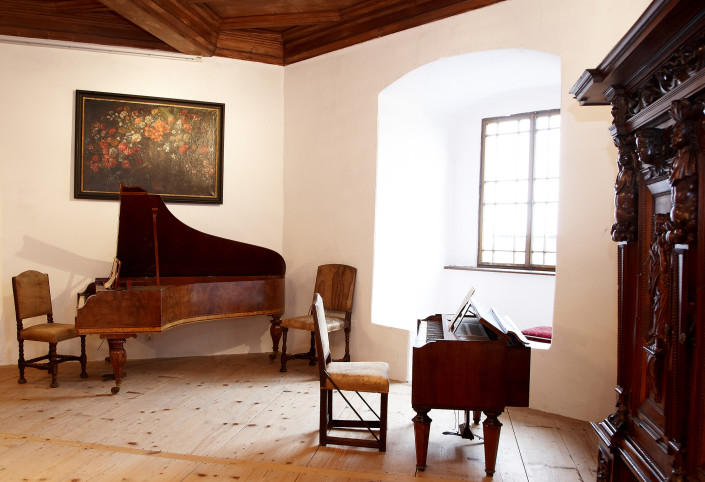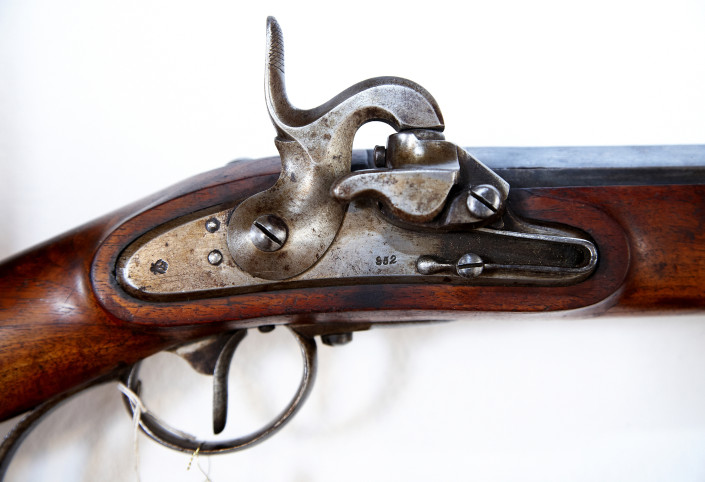Exciting world in the past
The ROSENBURG MUSEUM
An excitingly arranged exhibition with extensive showrooms awaits visitors. All former stately living quarters are now accessible again and have been completely furnished with antique furniture and art objects from the Rosenburg Castle furniture depot. Among other things furniture which has never been exhibited, such as diverse display cabinets with intarsia or solid consoles and wardrobes are part of the exhibition. Sacral furniture and art objects are exhibited in the vestibule to the chapel on the first and second floor.
The collection of arms
The collection of arms has been enlarged to three rooms and supplemented by new exhibits from the arms depot that have never been exhibited. The rooms are thematically arranged. The first room features cut and thrust weapons from the 15th and 16th century, weapons for tournaments and representational purposes as well as suits of armour and armaments. The second room features military cutting weapons and firearms with an exquisite collection of military pistols. The third room features an extensive collection of hunting weapons, which at the same depicts the development of various shoulder-held weapons such as wheel-lock, flintlock and percussion lock rifles. In addition, a collection of rare, very well-preserved accessories such as bullet pouches or hunting bags.
Historical compilation and presentation design:
Thomas Del Mar, Del Mar Ltd. London.
Exhibits from the Hoyos family private collection.
The Hoyos Room
History of the comital family Hoyos
The history of the comital family Hoyos is addressed in the newly arranged Hoyos Room. Starting with Baron Hanns von Hoyos (1506-1561), the most important representatives of the family Hoyos are introduced, and their achievements and activities are referred to. The close ties of the House of Hoyos to the imperial court in Vienna and the family’s achievements for the province of Lower Austria and the city of Vienna are clearly shown in this context. Unique exhibits and documents attest to the partially turbulent family history. The particularly friendly relationship between Emperor Franz I and Count Johann Ernest Hoyos-Sprinzenstein is addressed similarly to the hunting comradeship between Crown Prince Rudolf and Count Joseph Theodor Hoyos. The latter was among the last individuals who had also seen the crown prince on the day of his suicide, which gave rise to speculations and accusations from the imperial court, and prompted Count Hoyos to publish a private memorandum regarding the last hours in the life of the crown prince. Former art treasures such as a hunting dagger made of gold and ivory, a present from Emperor Franz I, are also exhibited.
Count Ernst Hoyos Room
Passionate big-game hunter
Count Ernst Hoyos was a passionate big-game hunter. His passion prompted him to conduct numerous hunting trips in the years 1881 – 1914. Some of them had the dimension of expeditions and led to areas of the earth that were still completely unexplored at that time. Among other things, he was the first white man to encounter the Aulihan clan, which was still unknown at that time. He documented the majority of his trips photographically and in the form of travel diaries. Old preserved glass negative plates and positive plates enabled a reproduction of the old photographs. The exhibition is thematically devoted to his trips to India, Africa and Mongolia. Particularly interesting are his ethnological observations and documentations, which he collected on his expeditions.
Exhibition curators: Dipl.-Ing. Markus Hoyos, Boris Brabatsch. Scientific compilation and associates: Dr. Gertrud Buttlar, Dr. Beatrix Berg. Graphic design and implementation: Reinhard Wagenhofer. Exhibits from the archive and the Hoyos family private collection.
The Falconry Museum
Visitors will get a cross-section of the history of falconry in the Falconry Museum at Rosenburg Castle. In addition to wonderfully preserved specimens of old garments, visitors will also see a series of preserved specimens of birds of prey.





